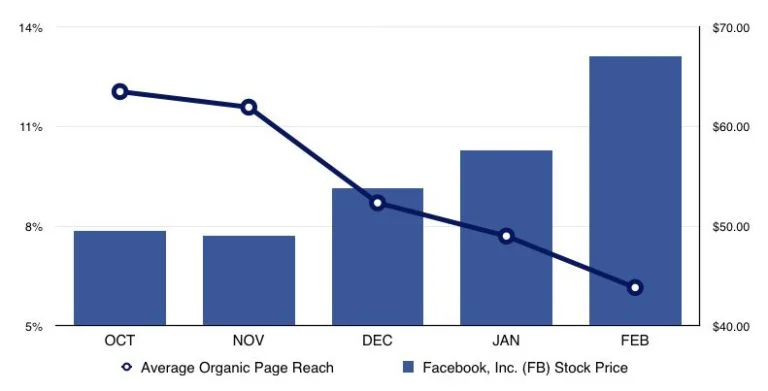

Today’s consumers have all the power. The shift in power from market to consumer can be laid at the feet of digital innovation. Never before have consumers had the sheer volume of options that they have today.
Without ever leaving their couch, consumers can get nearly anything they want at the click of a button (or a single voice command). Meals, mattresses, groceries, a personal driver, or even baby chickens—consumers get what consumers want.
So what does this mean for pest control businesses? It means you have your work cut out for you. The pest control industry became nearly a $20.4B industry in 2022, so competition is higher than ever.
You are competing for the attention of all-powerful consumers who are spoiled for choice. In order to find success and continue to grow your pest control business, your marketing efforts need to evolve.
Pest Control Marketing Pillars
It should come as no surprise that all pest control marketing efforts in this day and age need to be built on a solid digital marketing foundation. The buying power of digital natives is increasing every day. If your pest control company isn’t easy to find digitally, then you won’t even be considered.
Here are the pillars that have to be included in your pest control digital marketing strategy:
- Website
- SEO
- Local marketing
- PPC
- Social media
- Email marketing
Pest Control Website
I know what you’re thinking. You already have a website… right? Well, not all websites are created equal. Is your current website the same one-page website you have been using since 2015? It’s time for an upgrade.
If you want to be competitive with the top pest control companies on the market and drive traffic to your website, these are things you need to have:
- Fast load times
- High-quality imagery
- Intuitive navigation
- Social proof
- Valuable, educational content
- Customer portal
- Online billing capabilities
- Mobile-friendliness!!!
In the past, you would have needed a developer on staff to achieve lightning-fast load times on your website. This is no longer the case. There are many CMS (content management system) platforms on the market today that can achieve really impressive results.
When selecting a CMS to build your site on, there are several important factors to consider:
Ease of Use
Especially for smaller companies, this is one of the most important factors. Whether you build the site yourself or hire an agency to build it for you, you want your day-to-day use of the platform to be as easy as possible.
Appearance Options
You are building a brand and the look and feel of that brand are hugely important. Color and font customizations are just a couple of the many appearance options that an effective CMS will allow.
Extensions, add-ons, and community
This is one of the most often overlooked factors when selecting a platform but is one of the reasons that WordPress and some of the other leading options are the most used. The bigger the community, the more options will be available to customize the platform to fit your use case.
Customer Support
You likely didn’t go to school for website management, so having broad help documentation, FAQs, and responsive support staff is going to be a godsend in your efforts on the web.
Cost
Of course, this is always going to be a factor. It is important to keep the other factors in mind when weighing the pros and cons of the investment you are putting into the site. That said, there is a wide spectrum of price points available in the market ranging from free all the way up to thousands of dollars a year.
CMS Platforms
Knowing the importance of these factors, here are some of the best options on the market:
SEO in Pest Control
At this point, there is a much broader awareness of digital marketing acronyms, but for those lucky few who have avoided such topics up to this point, SEO stands for Search Engine Optimization. This discipline includes all efforts geared towards optimizing a site to better show up in search results (especially Google search results).
While you can keep an eye on other search engines, Google currently accounts for greater than 90% of all searches so it should drive the lion’s share of your SEO efforts.
There are currently more than 200 factors that Google’s algorithm considers when ranking websites for any given query. I know, it sounds daunting. But don’t worry, you won’t need to worry about all 200. There are a handful of factors that are going to carry the most importance and are where you want to focus on.
Here are the most important factors:
Authority
Many factors play into the algorithm deeming your website as authoritative on any given topic. In many ways, authority is both a ranking factor and a summation of the rest of the factors.
Backlinks from the correct sources are an indication of authority. Content that drives users to spend time reading and engaging on the site is an indication of authority. This is one of the factors that fits most clearly in the primary tenet of organic search. Authority is organic and it takes time to develop.
Ensure that everything you do on your site is geared toward adding value to the web and to your visitors and over time you will develop authority for your domain.
Website security
A couple of years back, Google released an update increasing the level of importance they place on websites having a secure connection (HTTPS). Similar to the conversation around selecting a CMS platform, most hosting providers on the market have plug-and-play HTTPS options that make it a very clean process to implement a certificate on your site.
While you can still rank with an HTTP site, it is highly recommended that this be one of the first things you do on your site. It will make Google like you better, your potential customers feel safer, and keep Chrome and other browsers from throwing any of those pesky “Not Secure” warnings in front of your site.
Mobile-friendliness
Another recent update that Google made was the emphasis on mobile friendliness. Of all searches on Google, nearly 60% of them are mobile. Because of this, Google has shifted to a mobile-first mentality. When they make updates to their search engine, they plan for mobile first and then desktop.
In order to rank effectively (on desktop or mobile search) Google puts a lot of weight on how mobile-friendly a website is. Many CMS theme options have taken this into account and have built-in mobile friendliness.
When you are building your site and writing content, make sure you check how the site looks and feels on a mobile device.
On-site Optimizations
We are past the days when you can create a page and get it ranking just because you said a specific keyword several times on the page. That said, semantic relevance still has a place and needs to be considered.
Determining what keywords to include on your site requires you to go through the legwork of performing keyword research. Backlinko has put together an exhaustive guide on everything you need to know about keyword research. Combine the steps in this guide with one of the free tools on the market for a great starting point for your site.
You can do all the research you want, select exactly the right keywords, target users at the perfect moment in their buying cycle– but it will all mean nothing if you don’t have the right story. The single most important aspect of on-site optimizations is providing valuable content that answers visitors’ questions.
Download this template for step-by-step guidance for your on-site optimizations. This, combined with Backlinko’s research guide is a good foundation for getting started with your SEO.

Page speed
If you think about your own experience on the web, it will be no surprise that load times on websites have a direct impact on customer experience on your site. Pingdom released a report with the impact of site speed on bounce rate and found that bounce rate was 9% on average for pages loading in under 2 seconds which skyrockets to 38% at only 3 seconds of load time.
There are many factors that impact page speed, but here are some ways to improve performance:
Reduce image size: Make sure that you compress and optimize images before loading them onto your site.
Optimize code: This can be one of the biggest issues with many CMS platforms, as they introduce a large amount of bloat into the code in order to templatize the site.
Remove redirects: Each redirect takes additional server time to load the page. You should use redirects as a means of keeping the site clean, but ensure that all internal links are not redirecting.
Use a CDN (content delivery network): Make sure you check out whether your CMS has a CDN or integrates with a 3rd party provider. CDNs provide globally diverse networks of servers to serve content on your site more optimally.
While there are other factors that impact page speed, improving in these areas will be a great start.
Backlinks
Backlinks are any links from external websites that point to your site. Danny Sullivan, the “Godfather of Search”, said that backlinks are the votes of the search democracy. Links can have a positive or a negative impact on your site’s position in Google Search, depending on the status of the external domain.
For a locally based company, such as a pest control company, backlinks from other organizations in their area is an effective way to establish authority in that location. This is a clear indication to Google that the target website is reputable and has that recognition from other companies.
As powerful as the right links can be, the wrong links can be equally detrimental to a domain. Do not take shortcuts when it comes to generating links to your site. Purchased links, blog networks, and other antiquated tactics are clear signals to Google that you are attempting to manipulate search rankings and you will be penalized.
Local Marketing
The mantra for effective local marketing is “own your space.” In this context, “your space” consists of your website, business listings on the major maps, directory listings, and social channels. Truly optimized companies will have a presence across all these platforms.
Here are some general rules of thumb to be successful in these areas of local marketing:
Be consistent: Your NAP (name, address, phone number) is considered by major search engines to be your business’s “thumbprint” online. In order for you to get as much visibility as possible, you need to make sure that you select one version of your NAP and make sure it is consistent across all platforms.
Example: ACME Corp. at 755 N Harbor Ln. 555.324.5849 is not the same from a search perspective as ACME Corporation at 755 North Harbor Lane (555) 324-5849. Pick one and optimize as many of your listings as possible with this information.
Be a completionist: Most of the major directories and social media platforms out there will reward you for having your profile/listing populated with as much information as possible. As mentioned above, make sure this information is consistent with all other platforms. In addition to this, invest in some high-quality images of your company, your fleet, and your team and share them.
Be active: For the platforms that allow companies to post and make updates (primarily social media platforms), it is important to be as active with your posting as possible. Similar to completing your profiles, platforms tend to reward companies for consistently being active.
Here are some important listings to make sure you claim and optimize:
While this is not an exhaustive list, claiming and optimizing your listings in these areas will jumpstart your local presence.
Check out this guide to get more details on how to effectively dominate the local pack in Google search.
PPC
Paid-per-click advertising can be a very daunting task for someone who is new to the practice. Given that you are paying for every interaction, you want to make sure that you are set up for success from day one.
Nail Patel has a full “set up” guide that walks through all the nuances of getting an account up and running for the first time. This guide is a helpful starting point for someone in any industry to perform the research, set up an account, and start driving traffic immediately.
For those in the pest control industry, there are a few ways to get some extra bang for your buck.
Create unique landing pages for each service you offer
While some of your prospects are going to just be looking for general pest control services (which you should have a landing page for), you want to make sure to have other landing pages that are targeting more specific services.
You have prospects looking for treatments for spiders, mosquitoes, termites, and the list goes on and on. Each of these has specific user intent, and should have content that meets those expectations.
Create unique tracking phone numbers for each service
Each of the landing pages you created should have tracking phone numbers added to them. This allows you to have much deeper insight into what service people are calling for and which of your campaigns is outperforming the others.
There are many call tracking services on the market that will get you what you need, but here are some of the ones we recommend:
Shift budget to top-performing campaigns
When you first set up your account it makes sense to have a campaign set up for all of your major services. Over time, however, you want to make sure that you are shifting budget to your top-performing offerings.
Your budget isn’t unlimited, which means you need to make the most of every dollar you spend. If you have a 15% conversion rate on your spider campaign and only a 3% conversion rate on your mosquito campaign, your return on ad spend (ROAS) is going to be dramatically higher if you focus more budget on spiders, potentially even shutting mosquitoes off.
Make sure you maintain an iterative mindset when it comes to reviewing your account. Campaign performance will fluctuate over time, so you want to make sure to shift your budget accordingly.
Focus on the right metrics
One thing that can be overwhelming for people new to the PPC world is the sheer volume of metrics you have access to. While it is nice to have that much transparency into performance, it can lead you to some bad decisions if you aren’t careful.
Always keep in mind that in paid search you are spending money to make money. Understanding that, you need to focus on the metrics that tell you whether you are accomplishing that goal. Look at your account’s performance holistically and make decisions that will improve your returns.
Social Media Marketing
Facebook has greater than 3B users in 2022 and Instagram is tracking over 1.4B. Taking advantage of these preexisting audiences allows you to reach them where they already spend time. There are two sides to social media marketing (SMM) that are important to finding success on these platforms: organic and paid.
Organic SMM
Just like search, organic SMM refers to all unpaid activities you engage in on social platforms. Every time you post, share a link, upload a video, etc. your audience has a chance to see it organically.
It is important to note that over time Facebook has shifted its algorithm to be less and less friendly to businesses who don’t have a paid presence on their platform. This chart shows some of the impact that businesses have seen with this shift:

Image credit: Jay Baer, Convince & Convert
Despite this, it is still important to be actively posting organic content because people will see it, and the more they engage, the more your content will be seen.
Types of content that performs well organically:
- Videos: As hard as it can seem, post video content. Sprout put together a great guide on social media video strategies. You don’t need to worry about having an expensive camera or editing software. Just grab your phone and make some videos for your audience.
- How-tos: One of the ways you can provide stickiness with your audience is by providing education and guidance on how to deal with some of the less severe pest issues. It also gives you an opportunity to highlight exactly when it makes sense to leave it up to the pros.
- Testimonials & reviews: People are always looking for recommendations on social media. Sharing other peoples’ experiences with your services is a great way to motivate them to give you a shot.
Paid SMM
Sprout also has a guide on paid social strategies and how to get started. There are links here that go deeper into the specifics on various platforms and best practices on each. Generally speaking, paid SMM is very similar to paid search.
In addition to reviewing each individual campaign’s performance, you will also want to look at which platform is bringing the best return.
Email Marketing
Of all digital marketing strategies, email marketing has been around the longest. There is a reason it is still around… it works!
Email allows companies to nurture leads, convert them into customers, and drive ongoing engagement and evangelism in your customer base.
So how to get started? Similar to launching a website, you need a platform to launch an effective email marketing campaign.
Email service providers (ESP) give companies all the tools they need to send, track, and report on email campaigns. Many of the providers have integrated AB testing features into their solutions as well, giving you the opportunity to consistently improve your campaigns.
Top ESPs
While these are some of the top stand-alone providers that we recommend, pest comtrol software like Briostack which comes with email integrated directly into your CRM is a better one-stop solution.
Getting Started
Once you have a platform selected, you need to start building your email database. This will be a combination of existing customers and prospects.
It is important to segment your database down into distinct groups so that you can send the right message to the right people at the right time.
Success Metrics
As with all forms of marketing, it is essential to know how to track and report on the success of your campaigns. Here are some metrics to keep a pulse on as you optimize your campaigns:
Deliverability:
This is the first and arguably one of the most important metrics in an email campaign. This is the rate of contacts in your segment who actually received the email you sent.
Goal: If your deliverability ever drops below 90%, then you have a problem. A dropping deliverability rate means that the email addresses you have in your database are bad.
How to improve: Most ESPs will break down undelivered messages into a couple of different categories: hard bounces and soft bounces.
Soft bounces are temporary bounces, indicating that the recipient’s email inbox was full or their servers are down. Hard bounces are more problematic and indicate that either you have been blocked from delivering to their inbox, or the email address is bad.
Open rates:
Open rate is the ratio of email recipients who click to open your message in their inbox.
Goal: A healthy open rate is between 15 – 20%. This indicates that the message you are sending to any given segment is resonating with that audience.
How to improve: The factor that most directly impacts the open rate is your subject line. If you have a poor open rate, then you should take a look at how you are writing your subject lines.
You could try to shorten your subject line, include a question, or use language that increases the urgency and timeliness of the message. These are some great ways to improve the open rate.
Click rates:
Click rates are the ratio of recipients who click a link that you have included in your message. In many email campaigns, you have to get your recipients to click in order to be successful. Are you trying to get existing customers to schedule their next appointment? They will need to click to the site. Trying to get prospects to sign up? They need to click. You get the picture.
Goal: For most industries, you are aiming to have a click rate of at least 2.5%. It is important to note that click rate is different from the click-to-open rate. Click rate compares the number of clicks to the total recipients, not just those who opened the email.
How to improve: Where open rate improvement focused on the subject line, click rate focuses on the body of the email. This is the overall message you write, the design of the email, as well as the CTA you are using. There are a lot of variables to test and play around with, but remember to put yourself in the mind of the recipient.
Unsubscribe rate:
This is the rate of recipients who click that unsubscribe button at the bottom of your email (which you are legally required to include in your emails).
Goal: As you might suspect, keeping unsubscribes as low as possible is always the goal. If you are frequently having people unsubscribe from your emails, then you need to take a look at your email database (how are you getting these emails? Do these people know you? Are they expecting to receive emails from you?) as well as the frequency of your email sends. You need to be careful to never spam your audience.
There is a huge amount of potential business waiting to be earned by companies that effectively use email marketing. These tips will help you get started, but there is always more improvement to be found.
In case you need some help, Briostack actually offers a marketing software add-on that provides you with email campaign automation and templates to make this all easier.
Build a Holistic Marketing Strategy
While each of these pest control marketing strategies is going to bring value to your business, building a cohesive strategy plan that plays to the strengths of each platform is going to bring you growth that is greater than the sum of its parts.
(Still not sure where to start? Here are 4 Pest Control Marketing Ideas to help you get going.)
Get a tour of Briostack’s Marketing Playbooks
"*" indicates required fields
Navigation
Related Posts


4 Tips for Home Services Providers Working With Lead Generation Companies
Continue Reading